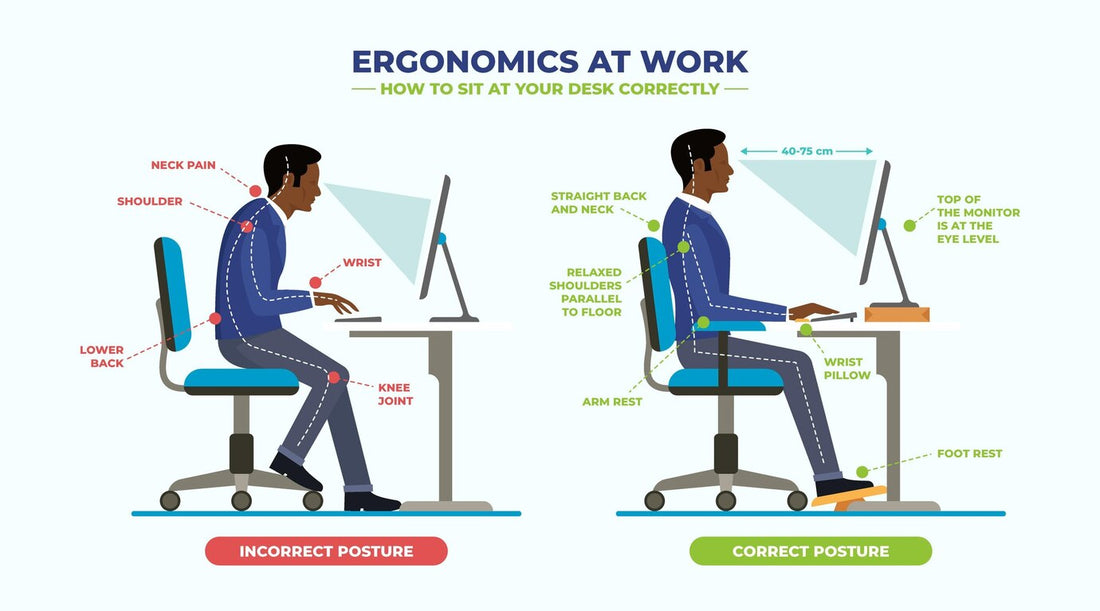Back pain is a common complaint among people who spend long hours sitting, particularly at a desk. Prolonged sitting can lead to poor posture, muscle strain, and spinal problems. Standing desks have gained popularity as a remedy for these issues, offering an alternative that promotes better posture and reduces back pain.
Understanding Back Pain
Back pain can be caused by various factors, including muscle strain, poor posture, and spinal conditions. For many office workers, the primary cause is prolonged sitting, which puts pressure on the spine and can lead to musculoskeletal disorders.
The Benefits of a Standing Desk for Back Pain
-
Improved Posture:
-
Natural Alignment: Standing encourages a more natural alignment of the spine, reducing the strain on the lower back.
-
Engagement of Core Muscles: Standing requires the engagement of core muscles, which helps support the spine and maintain proper posture.
-
-
Reduced Pressure on the Spine:
-
Less Compression: Standing reduces the compression of spinal discs that occurs during prolonged sitting, helping to alleviate back pain.
-
Dynamic Movement: Alternating between sitting and standing allows for dynamic movement, which can relieve pressure on the spine.
-
-
Increased Movement:
-
Encourages Activity: Standing desks encourage more movement throughout the day, such as stretching, shifting weight, and walking, which can help reduce stiffness and muscle tension.
-
Breaks Sedentary Patterns: By breaking up long periods of sitting, standing desks can help prevent the negative health effects associated with sedentary behavior.
-
-
Enhanced Circulation:
-
Better Blood Flow: Standing promotes better circulation, reducing the risk of swelling and discomfort in the lower back and legs.
-
Prevents Stagnation: Regular movement prevents blood from pooling in the lower extremities, reducing the risk of varicose veins and other circulatory issues.
-
-
Pain Relief:
-
Reduced Back Pain: Many users report a significant reduction in back pain after switching to a standing desk, as it helps alleviate the strain caused by prolonged sitting.
-
Improved Comfort: Standing desks can be adjusted to individual height preferences, ensuring a comfortable and ergonomic workspace.
-
Tips for Using a Standing Desk Effectively
-
Adjust the Desk Height:
-
Ensure that the desk is at elbow height, allowing for a 90-degree angle at the elbows when typing or using a mouse.
-
-
Alternate Between Sitting and Standing:
-
Incorporate periods of sitting and standing throughout the day to avoid fatigue and maintain comfort.
-
-
Use an Anti-Fatigue Mat:
-
Standing on a cushioned mat can reduce discomfort and fatigue, providing better support for the feet and lower back.
-
-
Maintain Proper Posture:
-
Keep the head, neck, and spine aligned, with the shoulders relaxed and the knees slightly bent.
-
-
Wear Comfortable Shoes:
-
Opt for supportive footwear to reduce strain on the feet and lower back.
-
-
Incorporate Movement:
-
Take regular breaks to stretch, walk, and move around to keep the muscles engaged and prevent stiffness.
-
-
Monitor Your Body:
-
Pay attention to how your body feels and adjust your standing and sitting times accordingly to avoid overuse injuries.
-
Standing desks offer a promising solution for those suffering from back pain caused by prolonged sitting. By promoting better posture, reducing pressure on the spine, and encouraging movement, standing desks can significantly improve back health and overall well-being. Incorporating a standing desk into your daily routine, along with proper ergonomics and regular movement, can help alleviate back pain and enhance productivity.




